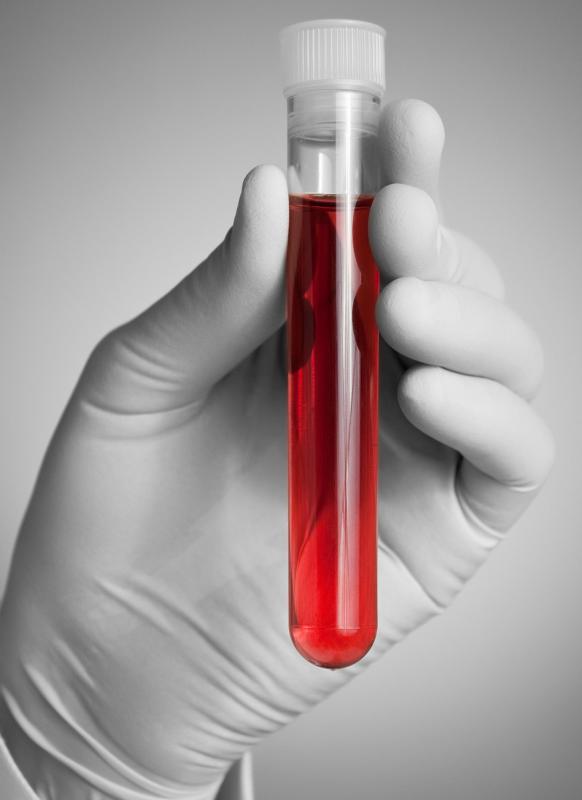At TheHealthBoard, we're committed to delivering accurate, trustworthy information. Our expert-authored content is rigorously fact-checked and sourced from credible authorities. Discover how we uphold the highest standards in providing you with reliable knowledge.
What Are the Different Types of Ligament Diseases?
There are many different diseases that can affect the ligaments. Ligament diseases, also known as connective tissue diseases, are classified into one of three types. Diseases that target ligaments are collagen-vascular, genetic, or degenerative. Most connective tissue diseases are auto-immune, which means that the immune system is triggered and causes inflammation that leads to damage in the body’s connective tissue.
Collagen-vascular causes of ligament diseases cause repeated instances of inflammation. The chronic inflammation damages ligaments because the fibers are continuously stretched. This causes weakness as the collagen that allows ligaments to stretch becomes so stretched that it loses elasticity. Collagen and ligaments are most commonly damaged in this type of connective tissue disease as a result of an abnormality in blood vessels. Rheumatic fever, systemic sclerosis, and systemic lupus erythematosis are examples of collagen-vascular connective tissue diseases.

Genetic ligament diseases are types of connective tissue diseases that are inherited. Ehlers-Danlos syndrome and Marfan syndrome are two common inherited connective tissue diseases. In patients with Ehlers-Danlos syndrome, abnormal genes cause a production of proteins that destroy collagen and lead to weakened ligaments. Patients with Marfan syndrome have connective tissues that are loose and do not function properly.

Degenerative ligament diseases are the types of connective tissue diseases that take time to show symptoms and progress with time as well. Scurvy is an example of this category. This disease results from a vitamin C deficiency. The lack of vitamin C causes a reduction in the amount of collagen that the body produces. Without the collagen, ligaments can be damaged easily.

Collagen is like a glue that holds the fibers of ligaments together. It also allows ligaments to stretch as necessary for the body’s movements. When collagen is affected by ligament diseases, the ligaments are more vulnerable. This vulnerability can lead to an injured ligament.
Vulnerable ligaments and weak or absent collagen can present many problems for a person who has a ligament disease. Although a sore ligament is due to a strained ligament, it is also possible that the pain can result from a torn ligament. In extreme cases of damage, such as a ruptured ligament, ligament surgery may be necessary to repair the damage.

Diagnosing ligament disease can be difficult. A person may suffer from a recurring ligament problem, such as tears, without any logical reason. Blood tests can check for some types of connective tissue disease, and imaging tests, such as magnetic resonance imaging, can provide pictures for doctors to see ligaments without relying on unnecessary or invasive procedures. Based on the type of ligament disease and each individual patient’s symptoms, doctors can provide ligament treatments to deal with the symptoms and problems that may occur.
AS FEATURED ON:
AS FEATURED ON:

















Discussion Comments
This article mentions the problems that occur because of ligament disease and collagen loss. I know a long list of former athletes who have no collagen or virtually no collagen in their knees now. When you play certain sports for a long period of time, the knees take a heavy beating.
When the collagen is worn away, you have bone on bone and as you can imagine that can be very painful. I am fortunate because I still have collagen. However, I have had some ligament damage in my ankles and knees and these areas swell when I exercise too heavily.
At some point in the future, I may need surgery. How well the surgery works depends on who you ask. Some people say the surgery made a world of difference, and other people say they are still in pain and wouldn't recommend going under the knife.
Lupus can be very frustrating. Even with the medications that are available, the disease can still cause swelling in the ligaments around the joints and the pain can be enough to limit your mobility. My aunt is constantly dealing with swelling in her feet.
She tries to avoid certain foods because they cause swelling in her ligaments. Sometimes the swelling starts almost immediately after she eats a particular food.
She is supposed to eat a diet that will not promote swelling, but sometimes it seems like virtually every food causes swelling. There are times when I feel so bad for her, but she seems to be dealing with the condition as well as can be expected. I have a lot of respect for her.
Post your comments